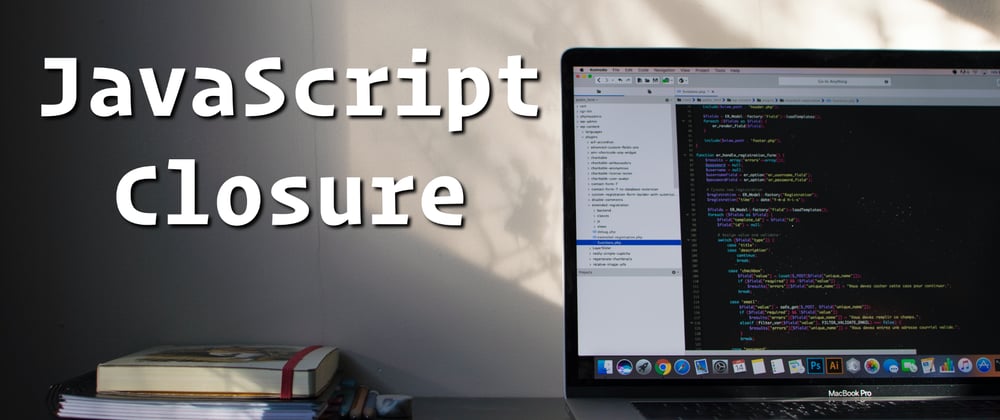What is a "closure"?
A closure is the combination of a function enclosed with references to its surrounding state (lexical environment). It gives you access to an outer function's scope or environment from an inner function.
Consider the following code snippet:
function outerFunction() {
let innerVar = "I'm inside outerFunction";
function innerFunction() {
console.log(`${innerVar}, but I can be accessed from innerFunction too!`);
}
innerFunction();
}
outerFunction();
// > "I'm inside outerFunction, but I can be accessed from innerFunction too!"
Lexical Scope/Environment
In the above code snippet, outerFunction creates a variable called innerVar, and a function called innerFunction. The innerFunction function is enclosed inside, and is only available within, outerFunction. innerFunction has no local variables of its own, but is able to access innerVar because they are both within the lexical scope of outerFunction.
Closure
In the initial code snippet, we called innerFunction immediately after declaring it. But what if we return the inner function instead?
function outside() {
let myName = 'Pixi';
function inside() {
alert(myName);
}
return inside;
}
let insideOutside = outside();
insideOutside();
If we run this code, we'll get an alert with my name. But why?
The reason this works is because functions in JavaScript form closures. A closure is a combination of a function and the lexical scope within which the function was declared.
insideOutside becomes a reference to an instance of our inside function when outside is run. This instance of inside maintains a reference to its lexical scope, which allows it to maintain its reference to the myName variable.
Passing Arguments
We can use closures to our advantage in creating enclosed functions that accept arguments.
/* we create a function that accepts one argument,
and returns a function that also accepts one argument,
and utilizes both arguments... */
function makeMultiplier(x) {
return function (y) {
return x * y;
};
}
/* we can call the outer function
and assign it to a variable */
let multiplyBy2 = makeMultiplier(2);
let multiplyBy5 = makeMultiplier(5);
console.log(multiplyBy2(3)); // 6
console.log(multiplyBy5(3)); // 15
/* we can also use argument chaining to call
both functions at once */
console.log(makeMultiplier(2)(3)); // 6
console.log(makeMultiplier(5)(3)); // 15
Our new makeMultiplier function gives us the ability to create more functions and then use those functions later.
When we create multiplyBy2, the reference to x = 2 becomes a part of the functions lexical scope. We can then use this function to multiply other numbers by 2. The same is true for multiplyBy5.
When we use argument chaining, we simply call the inner function immediately by passing an argument to makeMultiplier and immediately passing an argument to the function which it returns.
Want to learn more about scope in JavaScript?
Check out my previous post on scope and variable hoisting and let me know if you still have any questions! It might inspire a future blog post!
xx - Emily / TheCodePixi
| External Resources: |
|---|
| MDN Closure Docs |



















